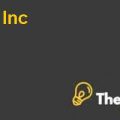Exhibit 4 provides an explanation of the statistics used in portfolio performance. Use this table and data provided in the case and critically evaluate the return and risk characteristics of the Pro Index Fund over the previous five years. Assume that the risk free rate is 2%.
Under exhibit 4 there are many measures of risk and return, those returns and risks measures have some relationships that are under consideration to be discussed under this part. At the start it is about the holding period return, the holding period return is considered to be the return from an investment over the period of time the investment is hold by investor, in this case the investment is for 5 years due to availability of the data for last 5 years. This derived results shows that the stocks of Pro Index have generated a total return of 162.45%, in short an investment of $100 has generated return of $162.45 for a given period of time of 5 years. The returns over the last 5 years are better than the benchmark, i.e. S&P 500, which has generated a return of 81.09%, Pro Index has generated the returns above twice to its benchmark. The holding period return can be on a daily basis, therefore under the returns on a daily basis (working days) is given in detail for the period of 5 years. The individual returns can be calculated by selecting the period of holding the stocks of Pro Index (Appendix 1).
The daily average return of Pro Index is 0.13% that is better than 0.06% of S&P 500, individual annual returns are 32.49% of Pro Index and 16.22% of SP 500. The performance is far better than the benchmark, but the returns come with some risks that is the standard deviation of the returns. The daily standard deviation (returns variability) of Pro Index return is 1.92% and it is 1.23% of S&P 500 returns, whereas annual standard deviations for Pro Index and S&P 500 are 30.3% and 19.5% respectively (Appendix 1).
The sharp ratio Pro Index is near 100%, it indicates that the risk and compensation of returns are equal, in that it can be said that the performance is near about equal to the benchmark. The information ratio is, however 0.99 that indicates that the portfolio manager has efficiency to generate returns near to his benchmark (Appendix 1).
As in (1), critically evaluate the return and risk characteristics of the Pro Value Fund over the previous year. Assume that the risk free rate is 2%.
Pro Value index contains 11 mid-cap stocks that are generating individual returns over individual risks.The performance of Pro Value can be measured by the average returns and risks of these mid-cap stocks that are giving value to Pro Value index. The risks and returns of all 11 mid-cap stocks are different, but they have one thing common that is information ratio. It indicates that the managers of all mid-cap stocks have the efficiency to perform in accordance to their benchmark’s performance. This is a good indication that Pro Value and its mid-caps are performing very well.
The daily returns of Pro Value are 0.19%, whereas holding period or annual return of the index is 47.64%. The returns are very attractive because it has increased the value of the stockholders by 43.46% in just one year i.e. 2013.Its daily standard deviation is 1.54%, whereas annual standard deviation is 24.43%, the risk of changes in the return is 24% for the year therefore it indicates that the net returns can be affected by the holding days during the period (Appendix 2).
The sharp ratio of Pro Value is 191.15% that indicates that it can generate a 1.91 times return to that taken risk per unit. This indicates that the stocks are performing very well for taking the extra risk, therefore it can be said that the premium return over risk is higher than the risk taken itself. This is in favor of the index that it is performing very well (Appendix 2).
Treynor’s ratio also calculates the return over the risk premium in terms of beta, however the ratio is 46.7% indicating that the return premium is below 50% of the risk taken per unit.
Using Exhibit 7, compare Pro Value Fund’s performance against the S&P 400 index over the previous year.
Thompson Asset Management Case Solution
The performance measurement should be based upon the relative risks and returns taken by the portfolio manager during its investment decision in various stocks to meet the given criteria of his investors. However the comparison is in between the benchmark and the individual stock to get the effectiveness of the stocks as compared to its benchmark..........................
This is just a sample partial case solution. Please place the order on the website to order your own originally done case solution.













